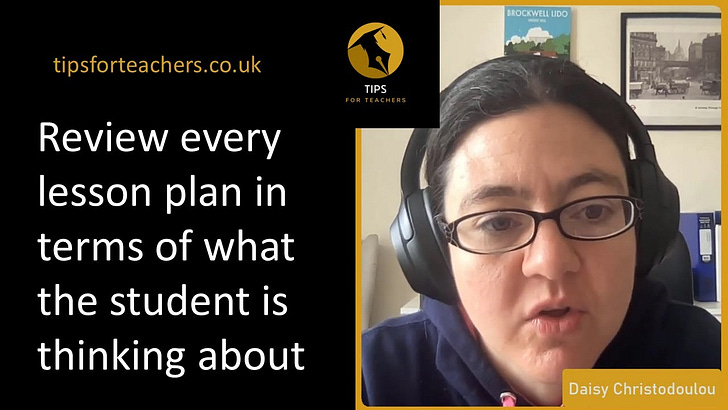Hello, and welcome to the Tips for Teachers newsletter. For over 400 ideas to try out the very next time you step into the classroom, check out my Tips for Teacher book.
💡 A quick tip to try in class this week 💡
Here is a scenario I see play out time and time again in classrooms:
The teacher starts the students off on an activity where they have been asked to work independently and in silence. The room is quiet. But after a few seconds, a few hands go up. Josh needs a pen, Harry is stuck, Heena has a really good question she wants to ask. As the teacher goes over to these students, even though she speaks really quietly, the volume in the room creeps up and the focus dwindles.
Can you relate to this? I know I can.
The problem is that when students first settle down to silent, independent work, that silence is incredibly fragile. It does not take much of a distraction or interruption to shatter it, and then you are fighting to get it back.
This is where Adam Boxer’s notion of Golden Silence is so important. Adam explains it as follows:
If you give the students a bit more time to work in silence, they will be in that place of absorption in the task. They will become engrossed and focussed, and less liable to distraction. At that point, the silence is strong and robust, and you can give it a little push and it won’t buckle. I call this kind of silence Golden Silence – when students are quiet and engrossed, and small distractions won’t throw them.
What does this look like in the classroom?
Well, in the scenario described above, the teacher could first make it clear that students should remain silent, and then move to a place in the classroom where they can easily see all students. Next, if hands start to rise, the teacher can use non-verbal gestures (a glare, a signal to lower hands) to prevent any interruption. Then, when the teacher senses the silence is robust enough - two to three minutes is usually enough - they can quietly make their way over to those students and deal with any issues.
Of course, the path to Golden Silence will be a lot smoother if the behaviour is good, everyone has their equipment, and students know how they should act if they are stuck (look in their notes, move on to the next question, write something they do know, etc).
If you are hungry for more, I discussed Golden Silence with Adam on my podcast here.
What would you need to change to make this tip work for you?
When could you try it for the first time?
View all the Tips for Teachers shared so far
📺 A video to discuss with a colleague 📺
Author and assessment expert, Daisy Christodoulou, explains why we need to consider what our students are actually thinking about
If the video doesn't play when you click on it, click here
Subscribe to the Tips for Teachers YouTube channel so you never miss a tip
👂 A podcast episode to listen to on your way home 👂
Maths teacher and author, Michael Pershan, shares his five tips:
Begin your explanations as a series of questions that everyone can answer
The best feedback is a learning activity, and it’s much better than written feedback on the page
Get used to asking “what if” after explaining something
Use partner work as a chance to recruit quiet kids to share their thinking
End every conversation with the student saying something smart
Listen to the podcast here.
Search for Tips for Teachers on any podcast platform (Apple Podcasts, Spotify, etc) and subscribe so you never miss an episode.
😎 Final bits and bobs 😎
Do you know someone who would enjoy this newsletter? Forward it to them, or direct them to the sign-up page here where you can also read all previous editions.
You can also sign up to my weekly Eedi newsletter, where I share resources, research and ideas to improve teaching and learning. Here are three recent editions you might enjoy:
Do you and your team want high-quality training or coaching, with ideas you can use in your very next lesson? If so, you can book some Tips for Teachers CPD. I am currently taking bookings for November 2023 onwards.
I am the series editor of a brand-new set of Key Stage 3 maths books called Mossiac, published by OUP. You can sign up to receive some free sample materials here, and watch authors Jemma Sherwood and Charlotte Hawthorne showcase some of the wonderful resources they have created as part of the project here
Check out the all-new Tips for Teachers online courses
If you value my work, please consider becoming a Patreon



